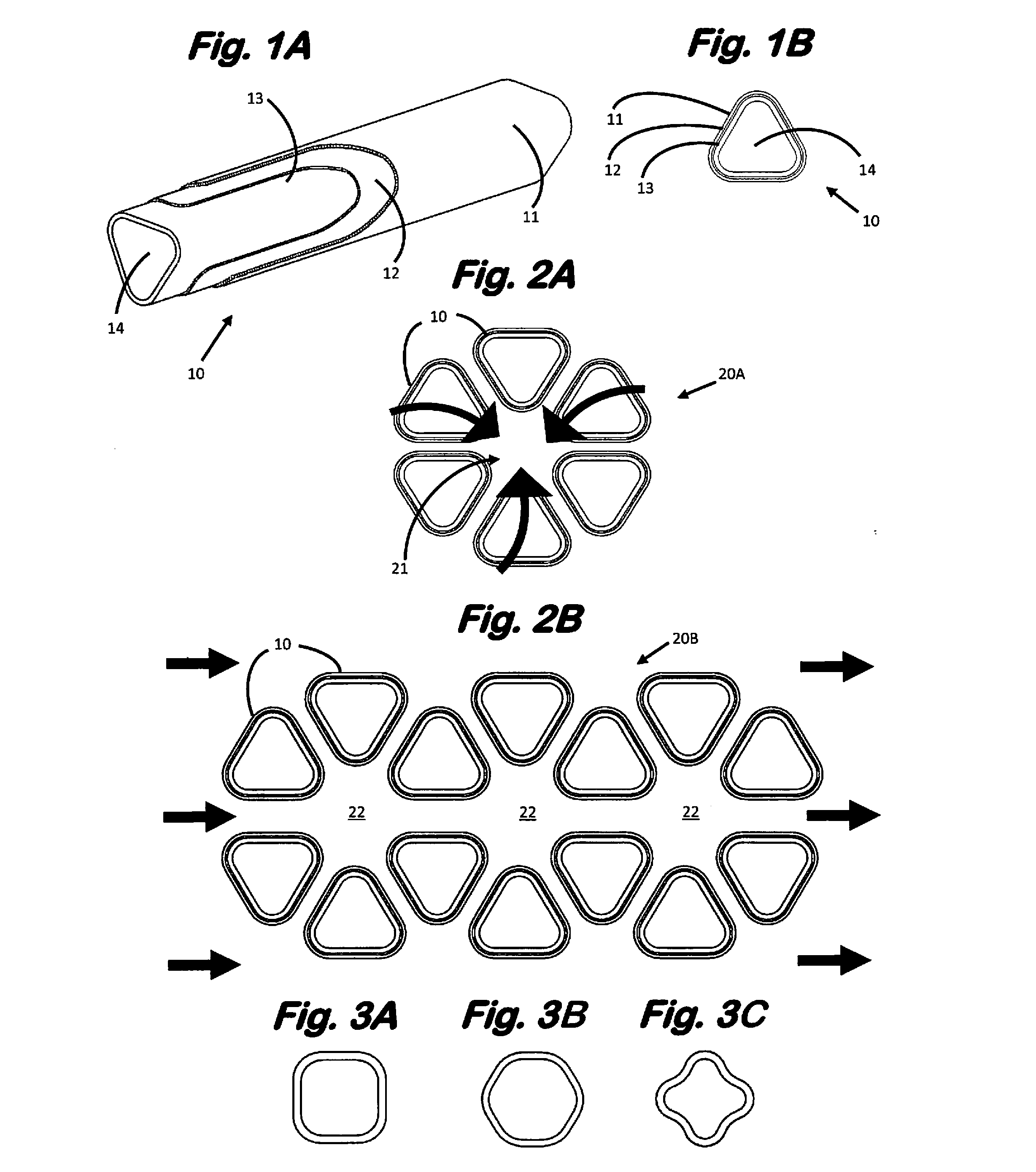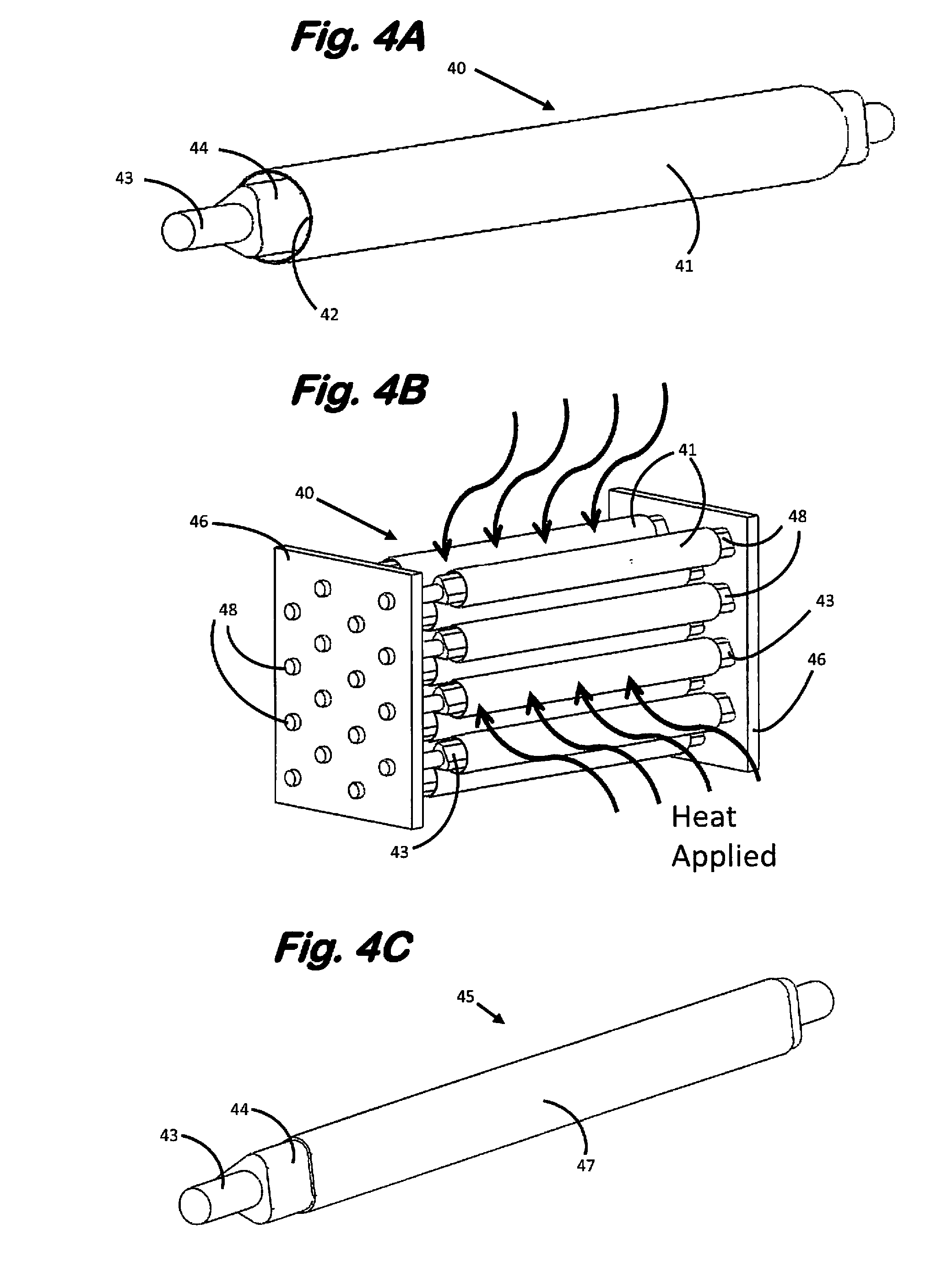Process for producing tubular ceramic structures of non-circular cross section
- Summary
- Abstract
- Description
- Claims
- Application Information
AI Technical Summary
Benefits of technology
Problems solved by technology
Method used
Image
Examples
example
[0077]A green state tubular anode having the cross section of an equilateral triangle with rounded vertices is produced possessing the following dimensions: length of 230 mm, cross-sectional area of about 31.5 mm2 and wall thickness of 0.50 mm.
[0078]An anode-forming composition in the form of an organic solvent slurry is provided by combining the following ingredients in the indicated amounts:
ComponentAmount (g)8-mol % yttrium zirconium oxide powder2.10NiO powder3.90methylethylketone (MEK)10.0polyvinylpyrrolidone (PVP) powder2.00
[0079]The tubular anode is produced from the foregoing anode-forming composition employing the following operations.
[0080](a) Forming the Triangularly Shaped Mandrel-Spindle Assembly
[0081]Stock heat-shrinkable polyethylene terephthalate (PET) cylindrical tubing having an outside diameter of 7.6 mm is divided into 230 mm lengths with each tubular section being weighed to within ±0.01 g accuracy. A triangularly shaped spindle of 305 mm length clad with a frict...
PUM
| Property | Measurement | Unit |
|---|---|---|
| Temperature | aaaaa | aaaaa |
| Viscosity | aaaaa | aaaaa |
| Viscosity | aaaaa | aaaaa |
Abstract
Description
Claims
Application Information
 Login to View More
Login to View More - R&D
- Intellectual Property
- Life Sciences
- Materials
- Tech Scout
- Unparalleled Data Quality
- Higher Quality Content
- 60% Fewer Hallucinations
Browse by: Latest US Patents, China's latest patents, Technical Efficacy Thesaurus, Application Domain, Technology Topic, Popular Technical Reports.
© 2025 PatSnap. All rights reserved.Legal|Privacy policy|Modern Slavery Act Transparency Statement|Sitemap|About US| Contact US: help@patsnap.com



